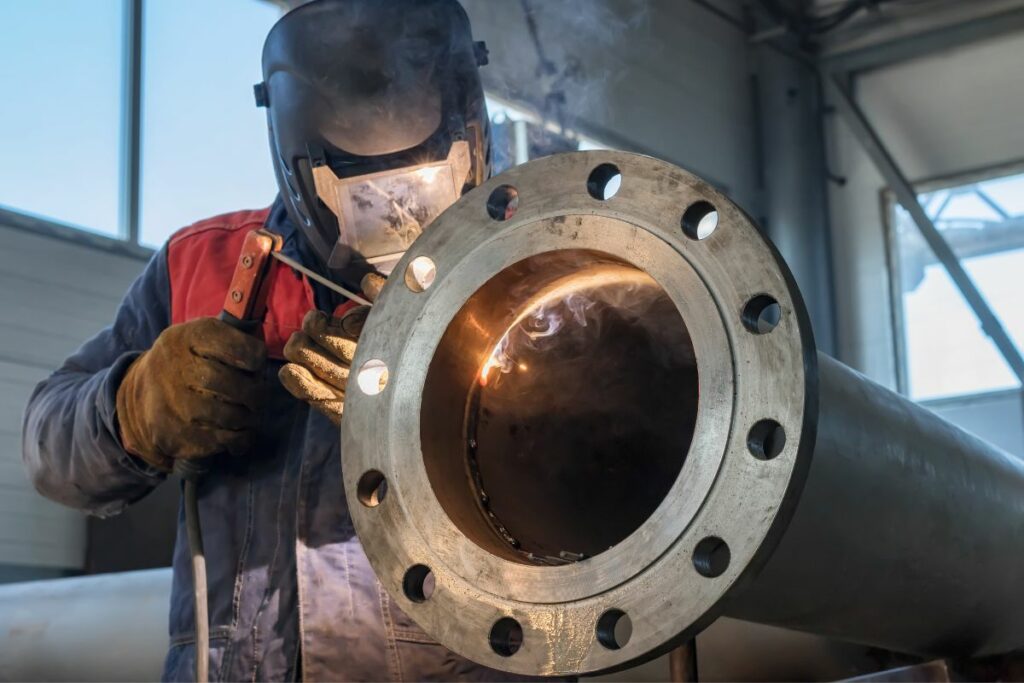
Welding comes in different forms depending on the kind of material that needs to be welded. The parental weldment materials vary and may involve metals, thermoplastics, and even wood. In most cases, welders fuse together pipes through the heat to form a bond. Pipelines are used to supply fuel, and transport water or natural gas across towns and cities. As such, pipeline welding is a critical component of the oil and gas industry, and it requires highly skilled welders to ensure that the pipelines are built safely and efficiently.
Read on to find out more about how pipeline welding works, its common procedures, and the basic welding equipment needed.
Also known as girth welding, pipeline welding is a type of fabrication process used to assemble pipes and form a network. Pipeline welders utilize flame torches, shielded metal, and tungsten arcs to form these pieces of metal. Pipeline welding requires a specialized set of skills and knowledge, as welders must be able to weld in various positions and environments, often working in remote locations and extreme weather conditions. They must also be knowledgeable in pipeline construction and maintenance procedures, as well as relevant safety regulations and standards.
By definition, pipe welding and pipeline welding are two different processes. Pipe welding makes up massive pipe structures inside oil refineries and chemical plants. Meanwhile, pipeline welding focuses on creating a uniform and country-wide pipeline networks spread underneath roads and establishments.
The following welding procedures are usually done in pipelines:
Manual Metal Arc (MMA) or Shielded Metal Arc Welding (SMAW) is one of the widely performed types of pipeline welding. It is also known as stovepipe welding, which uses no shielding gas or flux, thus making it more flexible and portable with lower travel speed. An electric arc generates heat to melt the electrodes to weld the pipelines.
Unlike GMAW, Flux-Cored Arc Welding (FCAW) uses semi-automatic machines to penetrate the metals easily without needing an external shielding gas. FCAW has lower deposition rates but is ideal to perform in windy conditions and outdoor applications.
In semi-automatic Submerged Arc Welding (SAW), the electric arc forms between the workpiece and the continuously fed electrode. Tracing becomes more difficult since the arc is not visible. On the contrary, it produces flawless surfaces as compared to other pipeline welding methods.
Each technique has its own advantages and disadvantages, and the choice of technique will depend on the specific requirements of the pipeline.
Before the actual procedure, make sure to prepare basic pipeline welding equipment such as:
Below are the steps to take before welding your pipelines:
As high-rise infrastructures continue to grow, so does the demand for skilled welders. From natural gas utilities to construction facilities, pipeline welding is essential in keeping our water and oil sources intact. Scattered across the United States, Canada, Russia, and even New Zealand are globally competitive natural gas markets, making the pipeline welding industry profitable for future generations.